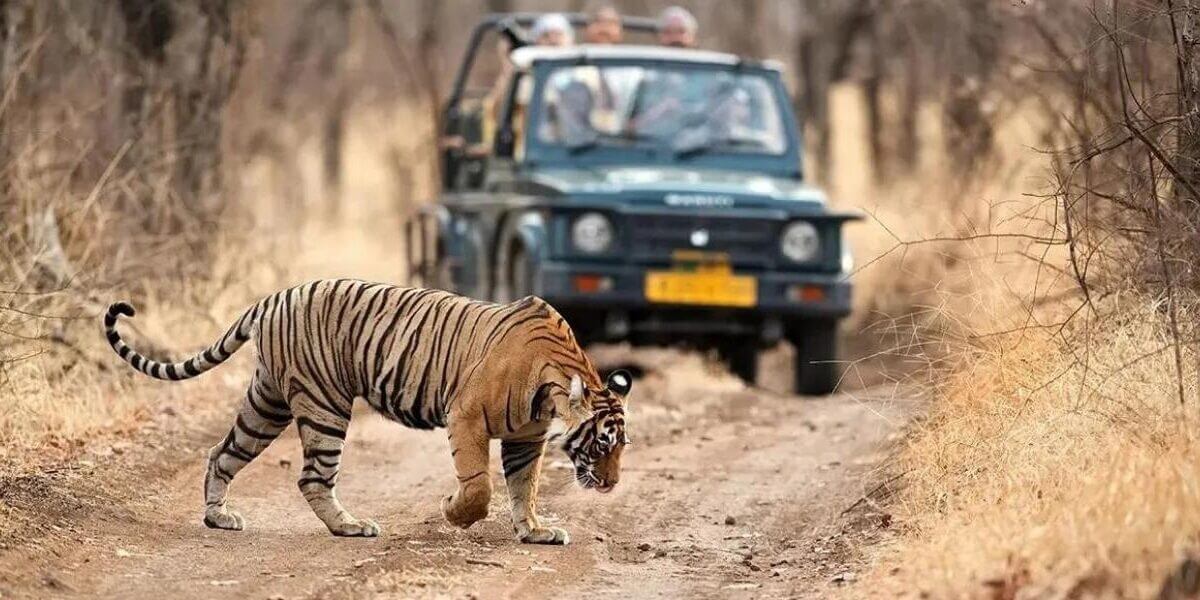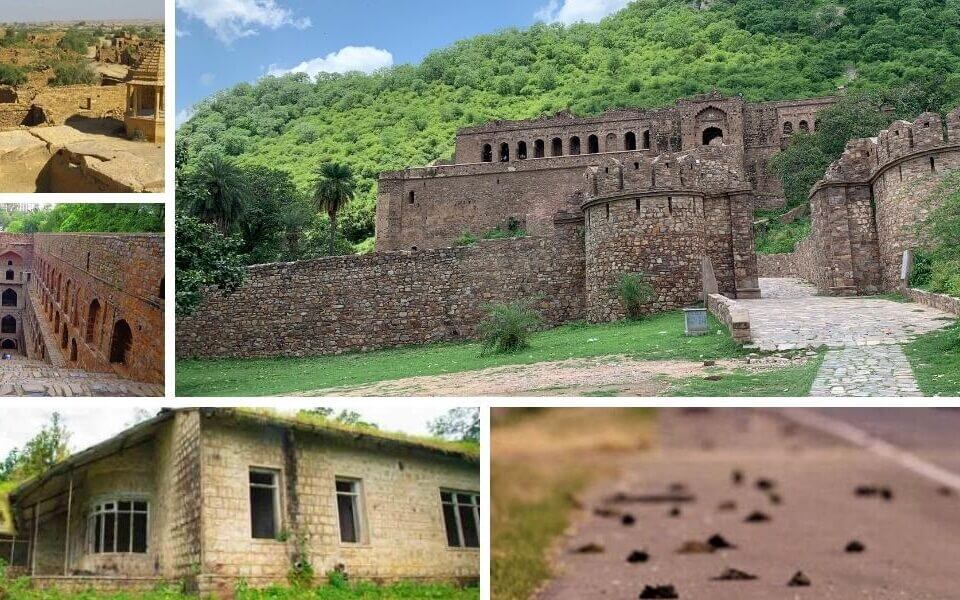Ranthambore National Park
Ranthambore is the most impressive location among travellers. Located in the soul of Jaipur between Bharatpur and Kota in Sawai Madhopur District, it is 130 km away from Jaipur. Ranthambore is listed among the reserves protected under Project Tiger and is one of the most filmed wildfire reserves. It was also proclaimed as a game sanctuary in 1955.
Ranthambore is located at the altitude of 700ft. and welcomes you with astonishing and historic perspectives, greenery, plain area, deserts, and generous localite and tiger reserves. On June 21, 2013, Ranthambore was realized as a UNESCO World Heritage Site, under a group of hill forts of Rajasthan. Ranthambore National Park covers a total area of 392 km2, including the buffer zone(area with abundant wildlife) and the core zone (area with less wildlife). It was a hunting ground for the Great Kings of Jaipur. There are unique hunting lodges, old fortifications, majestic and mini-forts all around the park. Not just all of that there are also temples, lakes, museums, a valley, a school of art and an adventure park and so much more to explore.
The people of Ranthambore are generous and belong to diverse castes and religions. Most of the people there indulged in black pottery, creating artefacts that brag about the rich culture and traditions of Rajasthan. Local markets of Sawai are flooded with traditional heavy pieces of jewellery, paintings, and puppets.
This tiger land is exclusively mysterious, full of heritage, legacies of the majesties of the past, and their rituals. Ranthambore lures people who have an enormous interest in wildlife. It gives a feeling of belongingness to its sightseers and leaves them with joy, amusement, and everlasting lasting remembrances.
Best time to visit Ranthambore
Ranthambore is exceptionally hot in the summer and exceptionally frigid in the winter. National Park of Ranthambore is available for wildlife tourism from 1st October to 30th June every year this time weather is just subtle and tourists can enjoy the safaris and visit all other tourist attractions without being the predator of either extremely hot or cold weather.
As the park only opens for nine months and shuts down during monsoon season, it is highly booked so make sure you book your hotels, safaris, and cabs in advance to avoid the rush and overpaying at the last minute.
Things you can do in Ranthambore
Wild Animals – There are diverse varieties of species present in Ranthambore. All Royal Bengal Tigers present here attract a large number of tourists. Many wildlife lovers come here to take a glimpse of these wild animals.
While on safaris in summer you can easily spot myriad species of animals near the lakes quenching their thirst, bathing, or simply wandering. Bird Watching is another thing that you can enjoy there. Ranthambore has around 320 species of birds including Serpent Eagle, Water Fowl, Sarus Crane, Kingfisher and Nightjar, Ranthambore National Park, etc. The best time to visit Ranthambore precisely for bird watching is monsoons and winters.
Rajbagh Talao, Malik Talao, and Palam Talao are the best places to watch birds. These places are surrounded by dry deciduous trees that offer scenic and photogenic views to all their visitors.
There are a few other incredible spots that you must explore,
Ranthambore Fort Located 700 ft. above the ground is something that you must explore. Fort offers an incredible view of the National Park. Jain Temple, Battis Khamba, Annapurna Temple, Rani Haveli, Naulakha Gate, and Fine rock art at the fort are some of the places that will acquaint you with the beliefs, culture, lifestyle, and construction patterns of bygone times. It was also declared a Unesco World Heritage site. This Fort has outlived many battles, and still stands powerful and exquisite. The best time to visit the fort is from October to February. It usually takes 1:30 to 2:00 hrs to explore the fort completely. Here are the timings and fee details,
Another place is Trinetra Ganesh Temple. It is the temple of Lord Ganesh, where the lord sits with his two wives Riddhi-Siddhi and sons Shubh-Laabh. Every year devotees in huge numbers come here to take a glimpse of Lord Ganesh. People also send invitations here to invite the lord and his family to their weddings and other functions. Priests read out loud every invitation to Lord Ganesh. Five Aartis are conducted each day, Prabhat Aarti, Singaar Aarti, Bhog, Sandhya Aarti, and Shayan Aarti.
The next one is the Rajiv Gandhi Museum of Regional History: Rajiv Gandhi Museum is the fourth museum of natural history in India. Exhibits of rare plants, animals, and geology and the facsimile of some animals like Chinkara, Leopard, Lion, and Tiger are present here. This museum was inaugurated in 2014 to create awareness about varied species of flora and fauna.There are three floors in the museum but visitors are only allowed to explore the first floor. Museum has an auditorium and library, possessing books about different aspects of wildlife. Padam Talao, Malik Talao and Raj Bagh Talao, Kachida Valley are some other places that you should see.
Ranthambore Safari
For Safari Ride in Ranthambore, you have two options: half-day and full-day jeep Safari. You must go for these if you love to capture animals and nature. You can choose to enter any zone of the park.
Timings: 06.30 am – 10.00 am and 02.30 pm – 06.00 pm
Ranthambore is like a paradise to all the people who possess even the skinniest interest in flora, fauna, lush greenery, and nature. Ranthambore has the largest banyan tree in the country. This tiger land is exclusively mysterious, full of heritage, legacies of the majesties of the past, and their rituals. Ranthambore is exceptionally beautiful and attracts people who have an enormous interest in wildlife. It gives a feeling of belongingness to its sightseers and leaves them with joy, amusement, and everlasting lasting memories.




